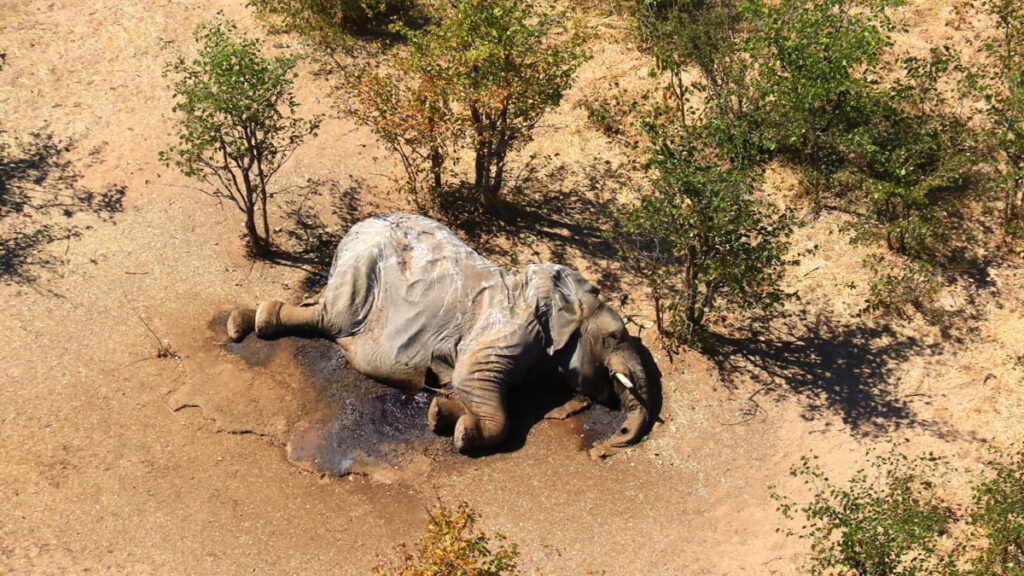In 2020, a devastating mystery unfolded in Botswana’s Okavango Delta as hundreds of elephants, spanning from the youngest calves to venerable matriarchs, began walking in circles before they collapsed and died. More than 350 of these magnificent creatures lost their lives under perplexing conditions, prompting an urgent search for answers from wildlife experts and conservationists. After numerous theories circulated, a new study has emerged shedding light on the tragic phenomenon.
The Mystery Behind the Elephant Mortality
According to recent research published in the Science of the Total Environment journal, the mass fatalities appeared to be linked to poisoning from cyanobacteria blooms, commonly known as blue-green algae. These potentially lethal microorganisms flourish in stagnant water under certain environmental conditions, such as high temperatures. It is believed that the elephants unwittingly consumed water tainted with these toxins, leading to their premature demise.
Researchers pinpointed that many of the elephant carcasses were notably clustered around specific waterholes that had seen substantial cyanobacteria blooms. By mapping the distribution of the remains, they inferred that these elephants likely ingested toxic water, which initiated the lethal poisoning.
Davide Lomeo, a PhD student in Geography at King’s College London and part of the research team, highlighted that while the larger elephant bodies were more readily visible, other smaller wildlife may have also suffered similar fates, possibly becoming prey for scavengers before being identified during aerial surveys.
A Global Pattern of Climate-Driven Wildlife Diseases
This tragic death toll among elephants is part of a broader trend. The researchers pointed out that climate change is triggering sudden disease outbreaks among wildlife worldwide. In the same year, 35 elephants in Zimbabwe died from bacterial infections due to prolonged droughts, while in Kazakhstan, a staggering 200,000 saiga antelopes fell victim to hemorrhagic septicemia, once again illustrating the linkage to climate change.
Niall McCann, director of conservation at National Park Rescue, emphasized the significant role climate change plays in these outbreaks, noting its extensive impact on wildlife. Changes in water availability and the creation of hospitable environments for harmful organisms are detrimental to animal populations. As global temperatures continue to rise and weather patterns shift, similar incidents are likely to become more frequent.
The Dire Effects of Climate Change on Wildlife
The tragedy that occurred in Botswana highlights the far-reaching consequences of climate change on ecosystems and their inhabitants. Climate change is not solely represented by rising temperatures and melting polar ice; it’s also about how these shifts disrupt ecosystems, facilitating the rise of harmful organisms.
This incident underscores wildlife’s vulnerability to such environmental changes. In this instance, the elephants could not sidestep the contamination of their water sources, which ultimately led to their demise. It starkly illustrates the interconnectedness of nature, where alterations in one facet of the environment can reverberate throughout wildlife and biodiversity.
Implications for Conservation Efforts
As climate change continues to remodel ecosystems globally, wildlife conservationists encounter novel and complex challenges. The situation in Botswana serves as a clarion call for the need to closely monitor environmental changes and shield wildlife from the detrimental impacts of pollution, disease, and shifting climatic conditions. The heartbreaking story of the elephants and analogous incidents underscore how rapidly harmful organisms like cyanobacteria can decimate entire species.
The path ahead will demand global unity and decisive action to combat climate change and its effects on wildlife. Conservationists and environmental scientists are diligently collaborating to unravel the intricacies between climate change and wildlife diseases, yet the battle is far from being won.
Ultimately, the loss of these elephants stands as a poignant reminder of the urgent necessity to safeguard our planet and its inhabitants from the escalating threats posed by climate change. We must act swiftly to prevent further losses of species and avert tragedies like this from becoming commonplace.







